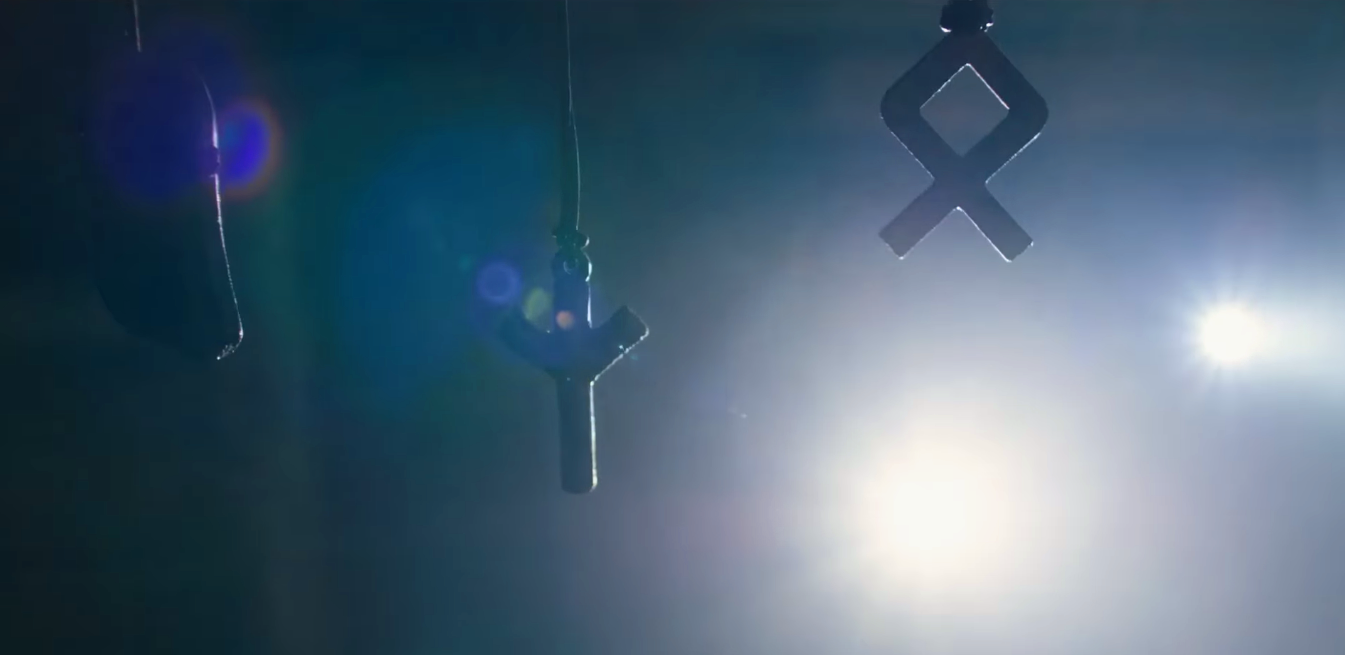The Ritual's NorsePlay elements.
Given the current darkening of seasons, I've decided to finally examine what mythical Nordic horrors lie within the cinematic forest of Netflix's film The Ritual (2017 CE, based on Adam Nevill's 2011 CE novel).
Like other offerings in the folk horror subgenre, The Ritual also crosspollinates this with the tropes of a monster film, and given its Norse Lore context, it's definitely a NorsePlay from its following elements:
1. The Runes. Mysteriously carved far too high up on tree trunks out in the middle of a nowhere wilderness forest adjacent to Sweden's 270-mile King's Trail (Kungsleden), are various runes, mainly Othala (ᛟ), Algiz (ᛉ), and Nauthiz (ᚾ), two also visible as hanging ornaments/amulets in the cabin. There's alot in the Norse Lore pinned upon the runes, the most compelling being Odin's Rúnatal where the Allfather lists the magical uses for them.
2. Human Sacrifice. The hikers lose one of their party during the night, waking to find his tent torn open, and him screaming in the distance. They find him the next morning, hanging with this abdomen eviscerated way high up in the trees like a sacrificial offering and/or territorial marker, much like the freshly killed deer they found displayed earlier in the film. In the Norse Lore, Odin spears himself in self-sacrifice on Yggdrasil to pass through death for knowledge of the Runes, and Adam Of Bremen's Gesta Hammaburgensis Ecclesiae Pontificum describes the nine-year rituals at the Temple Of Uppsala as including nine men hung in a sacrificial grove there. Also shown above, The Oseberg Tapestry design depicts men hung from trees as sacrificial offerings.
3. Níðstang. While running back toward the spooky cabin they first spent a very unsettling night in, the hikers pass a few angled poles with desiccated horseheads & hides draped over them. These are the Nithing Poles of Icelandic Sagas used to death-curse & condemn enemies, sometimes specifically by making the landspirits drive them off their property. This might explain why the cultists and their monster have successfully remained hidden & isolated in their forest for so long.
4. Loki. After collapsing through the front door of the spooky cabin, the winded protagonists catch sight of someone praying in front of a stone image taken from the Kirkby Stephen Stone (8th c. CE), thought to be a depiction of the post-punishment bound Loki. Loki is bound by the intestines of his legitimate son Nari, so perhaps the dangling intestines of the aforementioned treehung victims are meant to reference that.
 |
| [Illustration by R.N. Laing.] |
5. The Monstrous Children of Loki. In the last act, we finally have a description of the monster by The Host (Danish actress Maria Erwolter):
[It's] A god. Ancient. One of the Jötunn. A bastard offspring of Loki. We do not say its name. [...] We worship it. It keeps us here. Lets us live beyond natural life. No more pain. No more death.
With this outright explanation we get the why of it. In the Norse Lore, Loki is known for four extra-marital children, three of them considered monstrous: Wolf Fenrir, World Serpent Jörmungandr, & Death Goddess Hel, each in their own way a lynchpin contributor to the doom of the worlds, Ragnarök. Given these products of his affair with jötunness Angrboða, the possibility of additional children with awful abilities isn't out of the question, and in this case the monster has the ability to take on the appearance of people and create illusory settings, which sort of matches Loki's gift of shapeshifting, and jötunn Utgard-Loki's masterful skills of illusion. Also, Sleipnir's extra-legged polymelia is mirrored in the monster's four legs & two arms, possibly the result of Loki being shapeshifted into an elk at the time of procreation, as he was a mare at the time of superhorse Sleipnir's making.
While The Ritual accomplishes many of the same things Midsommar does two years later in 2019 with its tragic backstory for the characters, The Ritual comes off as more of a monster film with the attrition of hikers before it finally gets to where it reveals how it intersects with the Norse Lore. With the last act's cultists, the folk horror context becomes ascendant, though it seems for people who gain remarkable longevity, they appear far less content than the later Hårga residents of Midsommar or the earlier Summerisle pagans of The Wicker Man (1973 CE), but perhaps such is the wyrd of those who cast their lot with Loki, which seems to ultimately make them living woodwoven statues (possibly an atavistic return to a pre-Ask & Embla condition).
At the end of the night, one might argue that The Ritual is more importantly owed for helping opening a market for Midsommar (perhaps even for other subgenre Mortal and The Northman), and hopefully further motion picture NorsePlay for us to enjoy ... or shiver to.
[And if any of you have read the book, I'd be interested to hear your evaluation of the read, and impressions of the film by comparison in the comments below.]
Guillermo Maytorena IV knew there was something special in the Norse Lore when he picked up a copy of the d'Aulaires' Norse Gods and Giants at age seven. Since then he's been fascinated by the truthful potency of Norse Mythology, passionately read & studied, embraced Ásatrú, launched the Map of Midgard project, and spearheaded the neologism/brand NorsePlay. If you have employment/opportunities in investigative mythology, field research, or product development to offer, do contact him.





Comments
Post a Comment